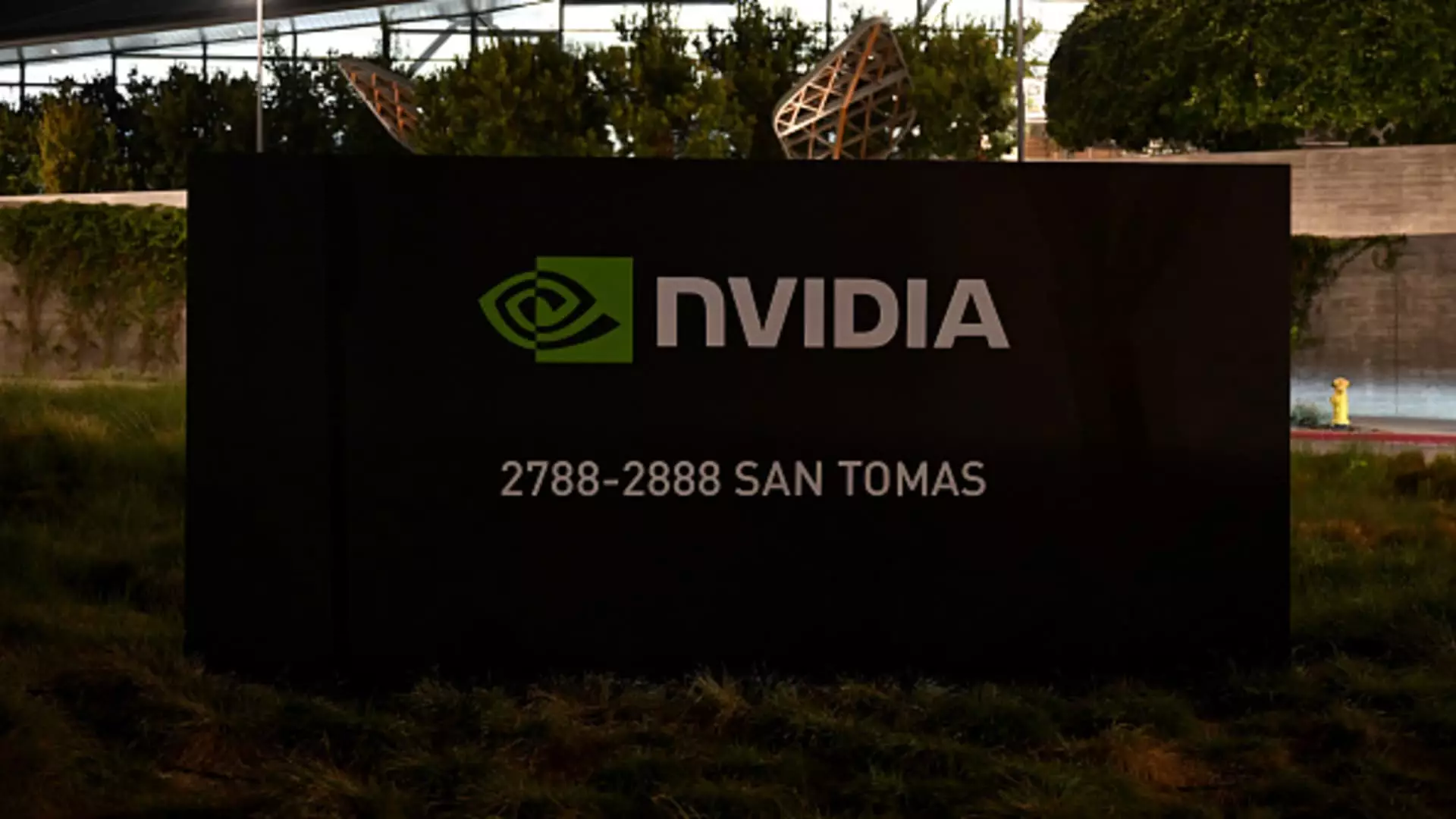Recent remarks by Nvidia’s CEO Jensen Huang at the Goldman Sachs Communacopia + Technology Conference have sparked renewed interest and investment in the volatile artificial intelligence (AI) sector. Huang emphasized that the burgeoning field of generative AI is not merely a tool but rather a transformative skill, which has significant implications for the industry. His optimism regarding the potential of data centers as a trillion-dollar opportunity has invigorated investors, lifting Nvidia’s shares by over 8% following his statements. This rally not only reflects confidence in Nvidia but also in the broader AI and semiconductor markets, suggesting a pivotal shift in how investors are approaching the technology landscape.
The resurgence of AI has prompted portfolio managers to reassess their investment strategies closely. In the wake of Huang’s statements, stocks of companies such as Advanced Micro Devices (AMD), Marvell Technology, and Broadcom saw remarkable gains, with many reporting double-digit increases. Wealth managers, including Gabelli Funds’ John Belton, noted that Huang’s insights into manufacturing capacity highlight a forthcoming period of sustained growth, potentially lasting from one to three years. For investors, this signals a clear shift towards positioning in companies that are poised to benefit from AI’s scaling and expansion.
The current market dynamics reveal a multifaceted approach to investment opportunities. Analysts are observing that hardware manufacturers may be the immediate beneficiaries due to the ongoing build-out of AI infrastructure. This is particularly true for AMD, which is increasing its competing graphics processing units (GPUs) while networking giants, such as Broadcom and Marvell, are poised to profit from the custom silicon chips being developed by major corporations like Meta Platforms.
Interestingly, the conversation around AI this week did not solely encompass Nvidia. Apple announced the launch of its iPhone 16, featuring AI capabilities branded as “Apple Intelligence.” However, the reception to this launch was somewhat lukewarm among Wall Street analysts, which raised questions about whether this would signify a groundbreaking upgrade cycle. Nevertheless, some experts, including CFRA’s Angelo Zino, remain unperturbed. Zino identifies Apple as a critical player in the long-term AI devices market, especially considering the anticipated consumer adoption of its Vision Pro headset.
Moreover, the enterprise landscape is also witnessing changes as companies like Dell are expected to improve margins in the new year, providing an attractive investment pathway. This shift emphasizes that while consumer products are important, enterprise technologies will similarly shape the future of AI.
While the optimism in the AI sector is palpable, there are also expressions of caution. The current surge in AI-related investments has led some to draw parallels with the dotcom bubble of the early 2000s. SiebertNXT’s chief investment officer, Mark Malek, raised considerable concern regarding the number of companies rushing into the AI space. He posits that while technology giants like Microsoft, Alphabet, and Amazon will likely reap benefits, the most groundbreaking innovations are taking place in the private sector, often away from public scrutiny.
Investors must tread carefully as they navigate these turbulent waters, weighing the potential upside against the looming risks of overvaluation and market saturation.
While the AI sector faces both exhilarating opportunities and sobering challenges, Jensen Huang’s recent comments have undeniably reinvigorated investor interest. The rise of AI heralds a future filled with transformative potential, but sustaining this momentum will require strategic foresight from investors and companies alike. As AI moves from a buzzword towards practical implementation, stakeholders must remain vigilant, investing wisely while also embracing innovation’s unpredictable nature. This new narrative around AI signifies not just a trend, but possibly the dawn of a new era in technology investment.


Leave a Reply